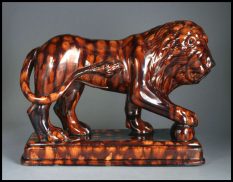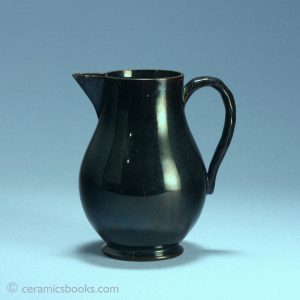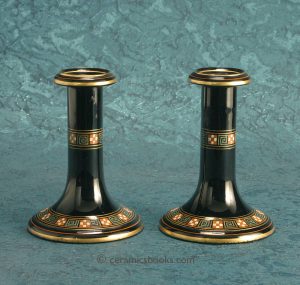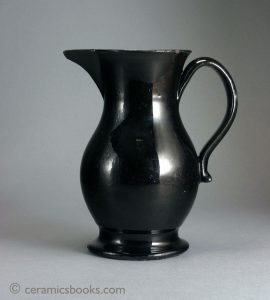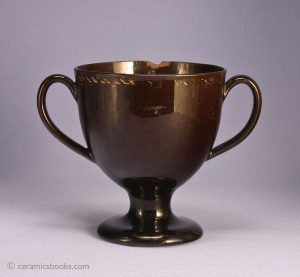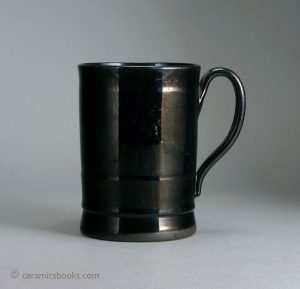Jackfield (black-glazed earthenwares)
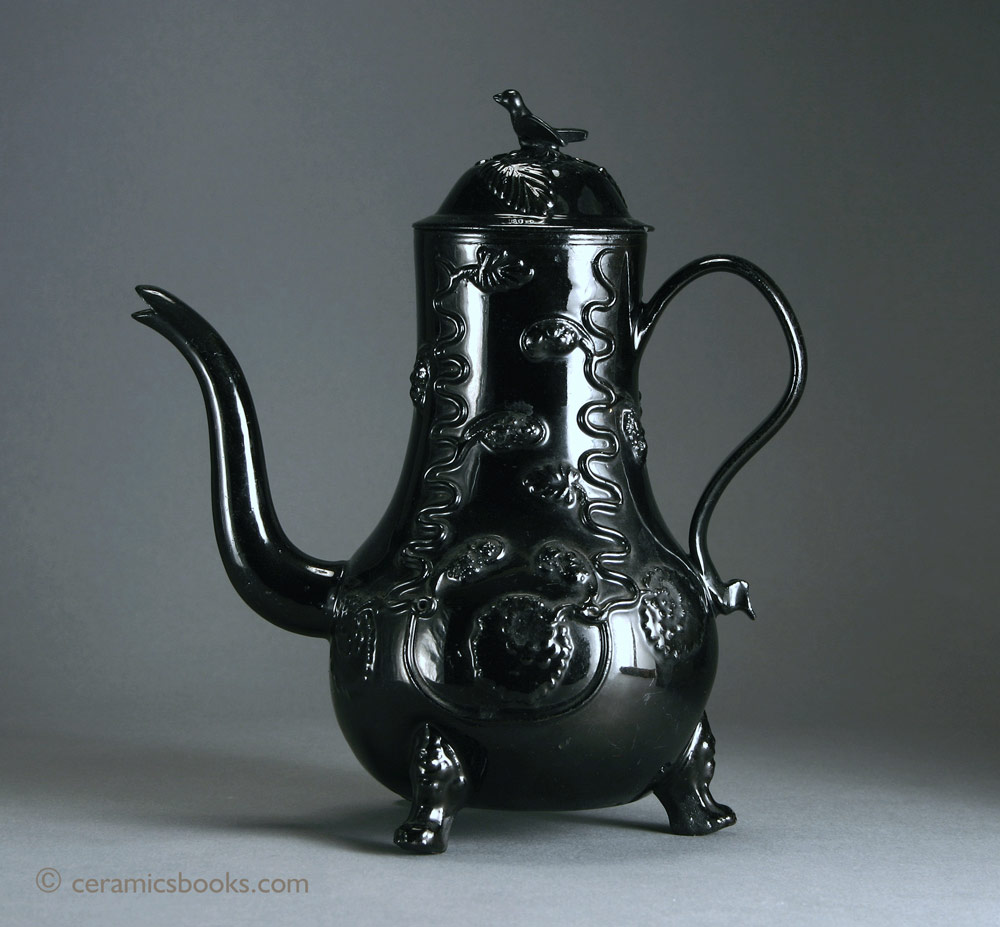
‘Jackfield’ ware refers to black-
Later black glazed Jackfield type wares were known by other names such as ‘Jet ware’ and ‘Ebony’ (often incorrectly attributed to the Dudson factory) etc. and were produced as far afield as Scotland well into the early C20th. Early wares from the C18th often had cold enamelled or gold size decoration. Later wares also had enamelled and printed decoration.
These wares are often confused with black basalt ware. The difference is that Jackfield wares may have a red clay or oxide stained darker clay body but they always have an opaque black glaze and are fired no higher than earthenware temperatures. Black basalt on the other hand is always black bodied and may be either unglazed or have a clear transparent glaze. Black basalt was generally fired higher than Jackfield wares to low stoneware temperatures.
Early black glazed wares include Midlands Blackware (late C17th onwards) and even earlier Cistercian wares (C16th).
